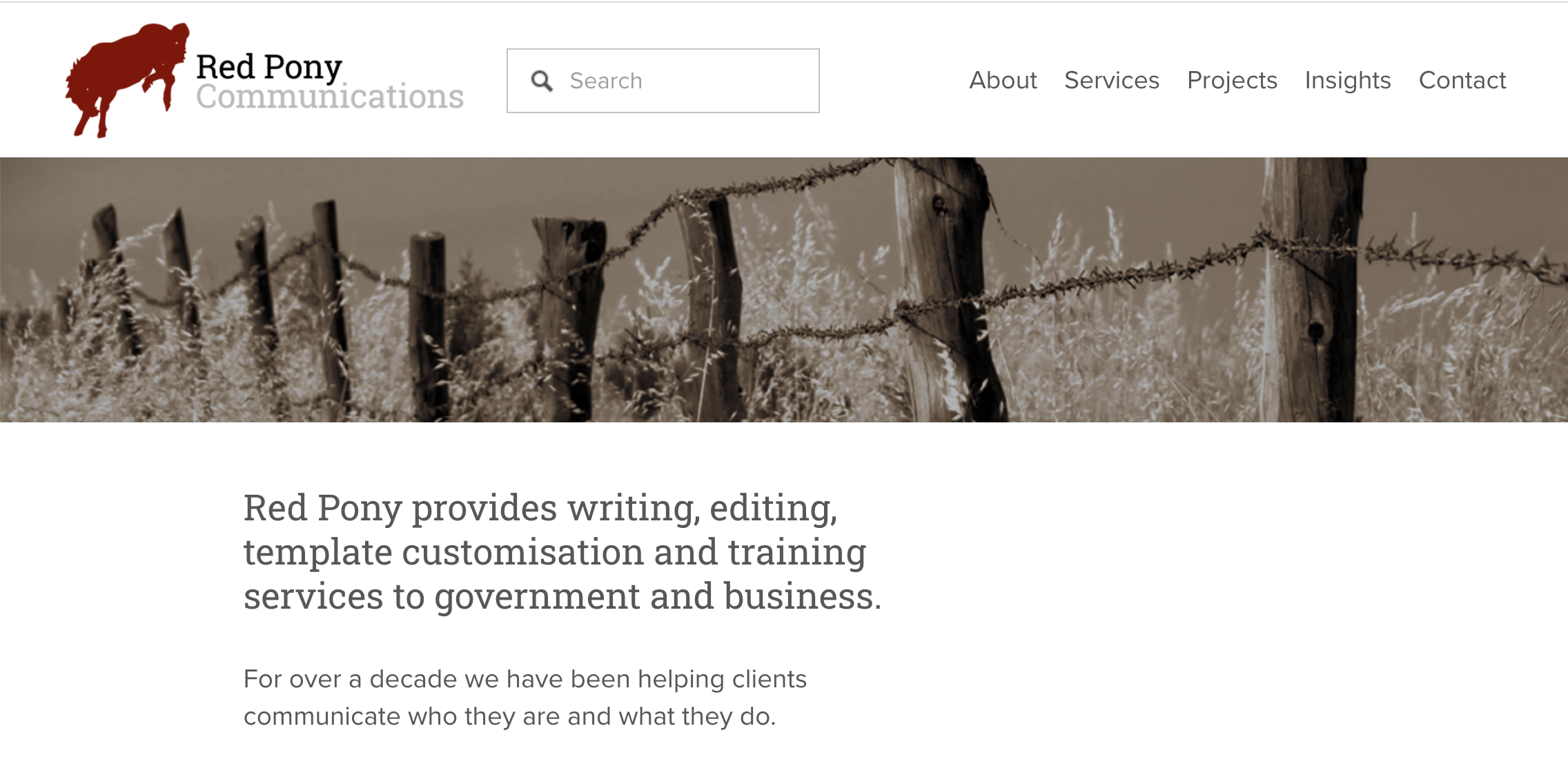Insights archive
Red Pony is a team of writers, editors, Microsoft Office template developers and communications trainers. We have been writing about our areas of expertise for over a decade in our Red Pony Express newsletter.
This collection features the best articles from the last 10 years.

Yodish: not so out of this world
By inverting the sequence of certain words or phrases in a sentence, anastrophes can be a skilful way of getting readers to attend more carefully – and, in some cases, to ascribe more weight – to what is being said.

What’s a project worth?
Lately I’ve been refining the tools we use to estimate the cost of writing, editing and proofreading projects. I thought I’d share with you some of the variables we use to predict the time a particular project will involve – which in turn determines the amount we quote.

The many faces of English
The English language is chameleon-like: a previous Red Pony Express article noted the ease with which it reaches across the Atlantic and Pacific to cross-pollinate and reinvent itself.

Your website is never finished
A website should never be a static thing. Red Pony’s own web presence has gone through a number of minor and major revisions over the years. Changes to the content and the structure reflected changes in the business as well as upgrades to the underlying software platform.

Beware the certainty of numbers
As uncertainty and confusion about COVID-19 continue in people’s lives, those hungry for information are finding themselves taking a crash course in epidemiological terms. A number of information platforms have responded by publishing their own COVID-19-related glossaries, including the Yale School of Medicine and our own ABC. But what about COVID-19 numbers?

Simple tips for refreshing website content
Like a lot of other businesses, we’ve been using the COVID-19 downtime to do a bit of housekeeping, including the next iteration of the Red Pony website (more about that soon). We’ve also been helping several other clients develop content to update their own sites, so I thought I’d use this opportunity to provide a few tips on writing for the web.

Panic stations: fear amid an ‘infodemic’
There is much uncertainty and fear in the current COVID-19 crisis. We fear the disease itself, the possibility of death, the unknown. We fear the loss of our livelihoods, our ability to connect with others as we have done and of life as we know it. Many of us have already suffered losses, and for some the prospect of more loss is devastating. Much of this fear is real. But there is also much misinformation, intended or not.

Editing as an essential service
Despite all of our advances in science and technology, falsehoods about the origin, spread and effective treatment of COVID-19 abound. In fact, the most effective communication tool humans have invented to date – the internet – has only served to give oxygen to rumours and lies and helped them to proliferate.

Commas say something in adjective pairs
Adjectives describe people, animals and objects, and in doing so, particularise and identify them. They answer questions like what kind, how many and which one? It’s hard to imagine a world without adjectives, but I’d like to see a science fiction writer try.

Seeing names: the fascinating world of synaesthesia
I’m terrible at remembering people’s names. I’m well aware of this deficiency and over the years I’ve made a conscious effort to address it, admittedly with limited success. As Dale Carnegie once observed, ‘A person’s name is, to that person, the sweetest and most important sound in any language.’

Email tone detector: helpful tool or cultural imperialism?
I’m always interested to see how automation and artificial intelligence are being deployed to help people write more clearly. The latest innovation to catch my eye is a ‘tone detector’ from the popular writing assistant software developer Grammarly.
A New Year's resolution on hedging
As 2020 draws near, I think about what I did this time last year, when I said things such as ‘I reckon I’ll exercise more’, ‘Maybe I’ll join the gym’. Hang on. ‘I reckon’? ‘Maybe’? What’s that?
Social media language in the workplace?
It only takes a work commute to realise how constantly we connect to the web. Next time you’re on public transport, have a look at what others are doing. Never before has there been so much information, so readily accessible, at the tap of our fingertips.
Four writing styles and when to use them
If you were to read the instructions for operating a nuclear reactor, you would expect it to be written very differently to a novel about a nuclear accident, or a newspaper editorial about the merits (or otherwise) of nuclear power.
Nouns for the masses
Noun words are members of an extensive family, but their variety can be confusing.
Where words go when they die
The current online version of the Macquarie Dictionary lists 138,000 words and 210,000 different definitions. According to an online survey of 2 million (admittedly self-selected) people, the average adult has a vocabulary of 20,000–35,000 words. Which begs the question, what happens with the rest?
One idea for better writing
It sounds a bit simplistic to say to that one idea will improve your writing, doesn’t it? But it’s true. Just one idea can make a big difference.
Developing a lifelong love of language
When my daughter started school a couple of years ago, one of the first things she was given was a list of ten words she was asked to learn to spell. Over the next few months more words were added until she had mastered one hundred different words.
Tenders, funding applications and award submissions: different sides of the same coin
When it comes to writing a tender, business proposal, funding application or an award submission the purpose is the same – convincing the reader that you are the best proposition based on your capabilities and achievements. One technique to help you achieve that is to apply a ‘what, how, where’ model to your writing.
A body of writing: good bones are just the beginning
When someone says a house has ‘good bones’ we tend to think of a solid structure, or a floor plan that can be used or improved without major renovation. In writing, ‘good bones’ also implies a sound structure, providing clear direction and logical flow of information. However, I actually think of this as the skeleton rather than the bones.
